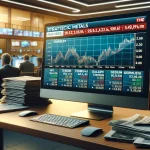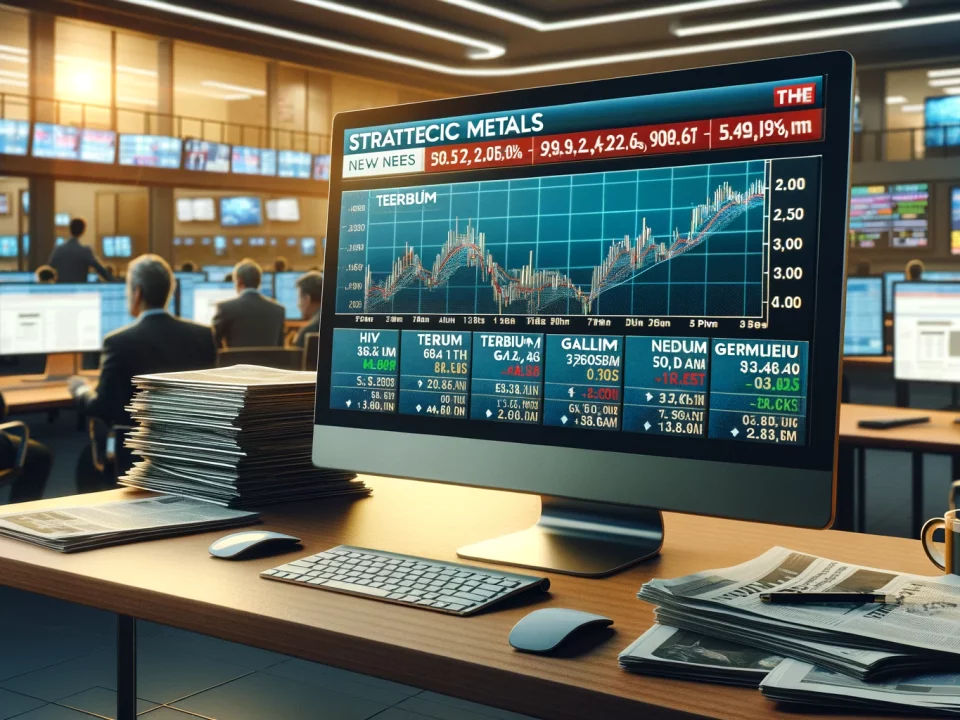
Let’s talk about Defense (Metals)
July 1, 2025
Weekly News Review July 7 – July 13 2025
July 13, 2025This week saw the launch of numerous new initiatives aimed at strengthening access to critical resources. The EU launched its joint procurement platform with hydrogen leading the way, while the Quad nations introduced a minerals initiative to boost supply chain resilience. Japan, meanwhile, forged ahead with plans for deep-sea extraction of rare earths.
All this and more from the newsroom.
BISMUTH: A NICHE METAL FACING SUPPLY CONSTRAINTS –
When China expanded its list of critical minerals subject to export controls in February, it added five niche metals, among them: bismuth. The announcement went largely unnoticed by most, except perhaps by hobby technicians familiar with bismuth’s role in soldering. Bismuth is best known for this application, serving as a safer alternative to lead thanks to its low toxicity. In the electronics industry, bismuth plays a crucial role in the transition to lead-free soldering, particularly in the manufacturing of semiconductors and circuit boards. The EU, for example, banned the use of lead solders in 2006.
Lesser known is bismuth’s role in medicine. Bismuth subsalicylate, commonly sold in the United States as Pepto Bismol, is widely used to treat acid reflux and indigestion. Another highly critical but underappreciated application is in fire sprinkler systems. Bismuth’s low melting point (271°C) makes it ideal for fusible plugs that trigger fire sprinklers. When exposed to heat, the metal part melts and the plug dislodges, releasing water. While not all fire sprinklers use this mechanism, fusible metal plugs remain a standard and reliable activation method in many systems.
China’s Dominance in Bismuth Production:
Despite its broad range of uses, global bismuth supply is overwhelmingly dominated by China, which controls more than 80% of refining capacity, according to the U.S. Geological Survey (PDF). Most other countries ceased their refining operations in the 1990s; for example, the U.S. did so in 1997. Meanwhile, China’s refining capacity has expanded eighteenfold since 1989, according to Germany’s Mineral Resources Agency (DERA). Europe’s largest bismuth refinery, located in Belgium and operated by the Canadian-listed firm 5N Plus, was sold to a Chinese company and closed in 2022.
Export Data Signals a Major Disruption:
The impact of China’s new export restrictions was immediate and significant. In January 2025, China exported 279 tons of high-purity bismuth metal. By February, the number had plummeted to just 39 tons, representing an 86% decline. In March, exports ceased entirely. Since then, only small quantities of lower-purity material have been exported. No shipments of pure metal have resumed to date.
Meanwhile, bismuth oxides, notably bismuth trioxide, were excluded from the February restrictions. As a result, exports of bismuth trioxide rose by over 7% during the first five months of 2025 compared to the same period last year. March saw a sharp spike, likely due to global buyers rushing to secure oxide supplies in response to the metal export ban.
Although bismuth oxides can be relatively inexpensive to produce by burning bismuth metal, reversing the process to refine metal from oxides is far more costly and time-consuming. This asymmetry has led to a surge in bismuth metal prices outside of China, especially in Europe. With limited substitutes available, industries that depend on high-purity bismuth must either secure supplies at elevated prices or risk production slowdowns.
JAPAN TO EXTRACT RARE EARTHS FROM ITS OCEAN FLOOR:
More than a decade after discovering vast rare earth deposits near one of its remote Pacific islands, Japan is moving closer to commercial deep-sea resource extraction. According to Nikkei Asia (paywall), a pilot test is set to begin in January 2026. The Japan Agency for Marine-Earth Science and Technology (JAMSTEC) will deploy a scientific vessel to a site 100 to 150 kilometers off Minami-Torishima, a small coral island roughly 1,950 kilometers southeast of Tokyo. The crew will lower a pipe 5,500 meters to the seabed to retrieve 35 metric tons of mud, which is estimated to contain 2 kilograms of rare earth elements per ton.
JAMSTEC previously conducted a successful test in 2022 off the coast of Honshu, Japan’s largest island, though that operation reached only half the now-planned depth. The upcoming project, if successful, could pave the way for full-scale extraction.
Japan’s seabed is believed to contain vast, untapped reserves of valuable minerals. The area surrounding Minami-Torishima alone is estimated to hold up to 16 million tons of rare earth elements. In the past, Japan has repeatedly emphasized its goal of establishing a commercial deep-sea mining industry by the end of the decade. Besides rare earth mud deposits, the Exclusive Economic Zone around Minami-Torishima is also estimated to contain numerous tons of so-called polymetallic nodules, which are potato-sized rocks containing critical minerals such as manganese and cobalt.
QUAD NATIONS LAUNCH STRATEGIC METALS INITIATIVE:
The four Quad nations —Australia, India, Japan, and the United States —agreed on Tuesday to work more closely on critical mineral supply chains. The announcement was made during the 10th Quad Foreign Ministers’ Meeting in Washington, D.C., where U.S. Secretary of State Marco Rubio hosted the foreign ministers from Australia, India, and Japan. The ministers gathered to address pressing regional issues regarding the Indo-Pacific, with critical minerals among the key priorities.
Under the new initiative, the Quad nations plan to work together to secure and diversify reliable supply chains for critical minerals. They will also collaborate on the recovery and reprocessing of critical minerals from electronic waste, according to a fact sheet published by India’s Ministry of External Affairs regarding the initiative. In addition, the four countries aim to partner closely with the private sector to boost investment in critical mineral infrastructure and promote long-term supply chain resilience.
Although China was not named directly, the Quad’s joint statement alluded to its near monopoly in the sector, warning that “reliance on any one country for processing and refining critical minerals and derivative goods production exposes our industries to economic coercion, price manipulation, and supply chain disruptions, which harm both economic and national security.”
Except for a few outliers, China dominates most global critical minerals supply chains, particularly the processing and refining stages.
EU LAUNCHES JOING PROCUREMENT PLATFORM:
The European Commission is introducing a new digital platform designed to centralize procurement across member states, aiming to secure the supply of critical raw materials, hydrogen, and natural gas for industry. As of today, interested market participants can register for the newly launched “Hydrogen Mechanism“, which covers not only hydrogen but also ammonia, methanol, and sustainable aviation fuels.
The first matchmaking round between buyers and suppliers is scheduled for September. The “Raw Materials Mechanism” and “Gas Mechanism” are expected to follow in the coming months, according to the Commission.
The initiative has received mixed reactions from industry stakeholders. Policy experts from think tanks, such as the Jacques Delors Institute, view the move as an opportunity to strengthen Europe’s market position and counter China’s dominance in rare earth elements. However, criticism from the mining sector suggests that the procurement requirements are too diverse to be standardized effectively.
Moreover, there is growing demand for the EU to place greater emphasis on recycling and circular economy strategies, rather than focusing solely on sourcing new materials.
ITALY AIMS TO REVIVE DOMESTIC MINING SECTOR:
For the first time in 30 years, new deposits of critical minerals will be explored across the nation.
With the Critical Raw Materials Act, the European Union introduced its first legislation to secure the supply of raw materials last year. The initiative aims to reduce reliance on imports by increasing domestic mining activity. Member states are expected to develop programs for the exploration and development of their mineral resources. Italy has now launched a nationwide geological research initiative, marking the country’s first major project of this kind in three decades.
The focus is on materials classified by the European Commission as critical and strategic for the EU’s economy and security. These include lithium, graphite, copper, manganese, antimony, rare earth elements, and platinum-group metals. The project is led by Italy’s Geological Survey, with an initial investment of € 3.5 million. A total of 14 research projects are planned, spread across the country. The program also includes mapping of mining waste that could be suitable for resource recovery. It aims to provide early guidance for domestic and international investors.
Italy Plans to Simplify Mining Project Approvals:
Italy’s Industry Minister Adolfo Urso called the initiative an essential step toward revitalizing the national mining sector. Just weeks ago, the government announced plans to streamline the approval process for mining concessions. Legislative steps have also been taken to establish a fund to support critical supply chains, which is expected to be backed by 2 billion euros from public and other sources.
Several other EU countries have introduced similar programs, including Spain (we reported). Others, such as Sweden, are already further along with mining projects. However, new mines often face opposition from local communities and environmental groups, even when the extracted materials support climate-friendly technologies such as wind power and electric mobility. Industry bodies, such as the International Energy Agency, and think tanks, like the Institute for Policy Studies in the United States, are calling for greater transparency in public communication and more substantial involvement from all stakeholders.
UNITED STATES: FUNDING EXPANDED FOR NATIONAL DEFENSE STOCKPILE –
Legislation phases out production tax credits, shifts strategy toward federal stockpiles, and private investment.
On Thursday, the United States House of Representatives passed the One Big Beautiful Bill Act, following its approval in the Senate earlier in the week. The legislation now heads to President Trump’s desk for his signature. The bill marks a significant overhaul of key components of the Inflation Reduction Act (IRA), notably by scaling back a range of clean energy tax credits. At the same time, it includes significant direct investments in the U.S. critical minerals sector.
Under the IRA, tax incentives were extended in October 2024 to support the domestic production of critical minerals and the manufacturing of clean energy technologies. These included a 10% production tax credit for qualifying mineral projects. In its original form, the new legislation eliminated these credits.
The final version, however, adopts a phased sunset schedule: credits are reduced to 75% in 2031, 50% in 2032, and 25% in 2033, with full expiration by 2034. While less abrupt than an immediate cutoff, experts warn this timeline may still be too short for many new projects to be financially viable.
On the other hand, the bill introduces new federal spending measures that could support the domestic minerals supply chain. These include $2 billion to expand the National Defense Stockpile, allowing the government to purchase and store strategic minerals, and $500 million to grow the Department of Defense loan program.
While the new legislation scales back some funding for critical minerals, the U.S. has brought renewed focus to the sector through other actions. For example, in March, President Trump issued an executive order allowing mining and processing projects to receive immediate approval or expedited federal review.
Figure of the Week: – 10% of global exports in 2023 came from the mineral sector.






